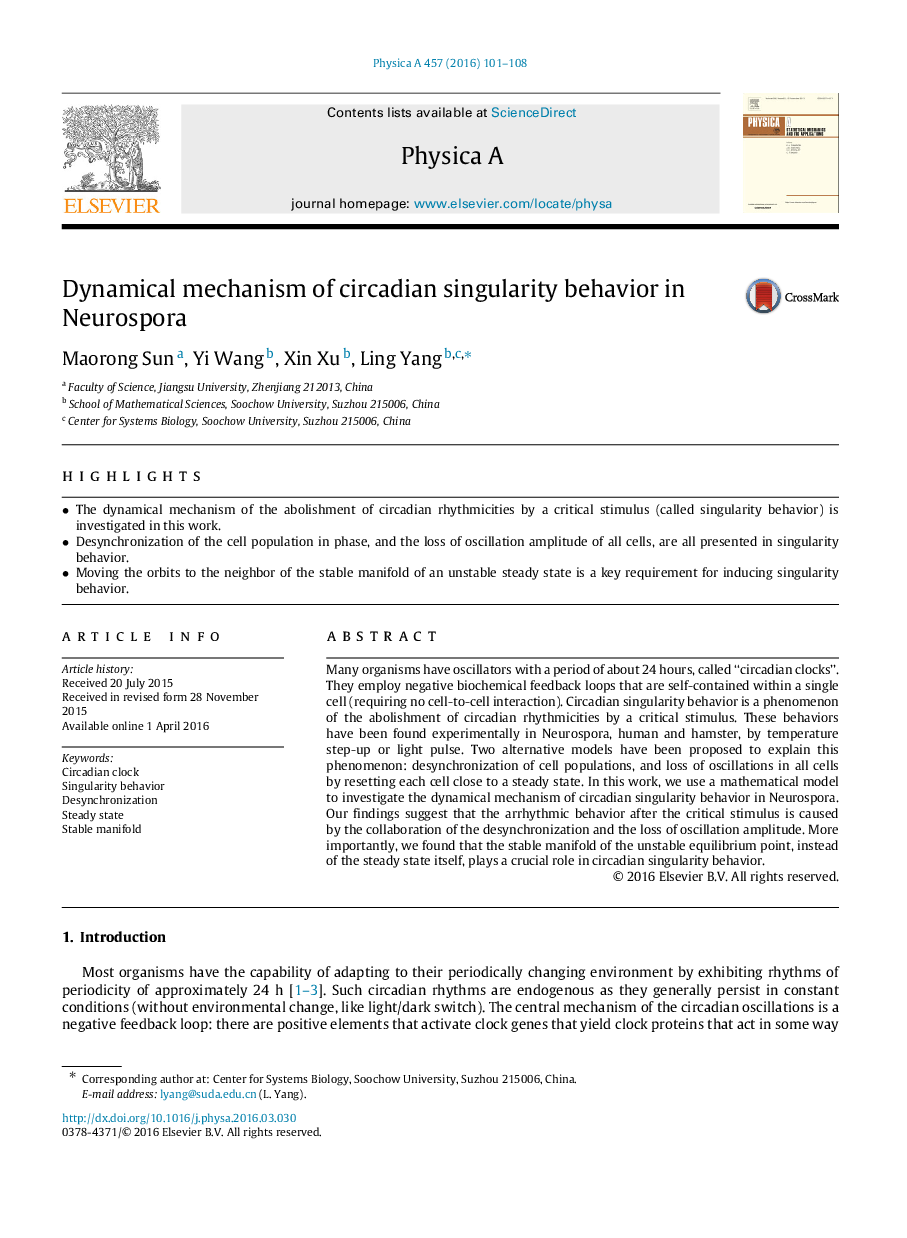| Article ID | Journal | Published Year | Pages | File Type |
|---|---|---|---|---|
| 7377904 | Physica A: Statistical Mechanics and its Applications | 2016 | 8 Pages |
Abstract
Many organisms have oscillators with a period of about 24 hours, called “circadian clocks”. They employ negative biochemical feedback loops that are self-contained within a single cell (requiring no cell-to-cell interaction). Circadian singularity behavior is a phenomenon of the abolishment of circadian rhythmicities by a critical stimulus. These behaviors have been found experimentally in Neurospora, human and hamster, by temperature step-up or light pulse. Two alternative models have been proposed to explain this phenomenon: desynchronization of cell populations, and loss of oscillations in all cells by resetting each cell close to a steady state. In this work, we use a mathematical model to investigate the dynamical mechanism of circadian singularity behavior in Neurospora. Our findings suggest that the arrhythmic behavior after the critical stimulus is caused by the collaboration of the desynchronization and the loss of oscillation amplitude. More importantly, we found that the stable manifold of the unstable equilibrium point, instead of the steady state itself, plays a crucial role in circadian singularity behavior.
Related Topics
Physical Sciences and Engineering
Mathematics
Mathematical Physics
Authors
Maorong Sun, Yi Wang, Xin Xu, Ling Yang,
